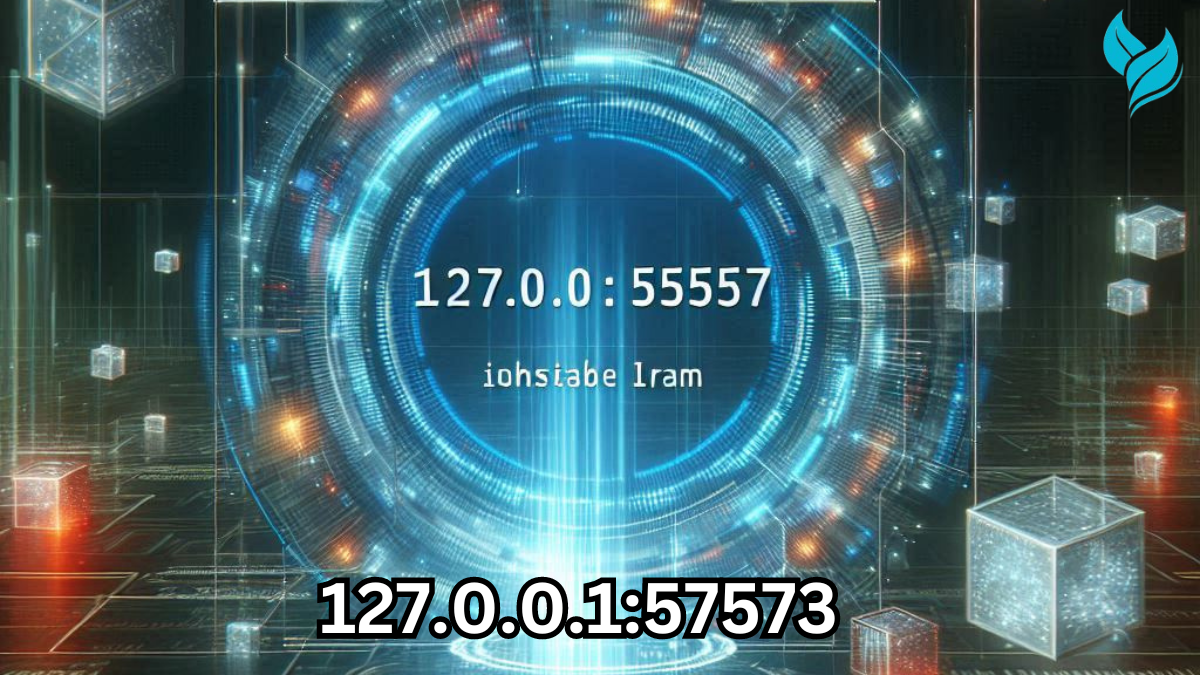When dealing with web servers, network configurations, or local development environments, encountering terms like 127.0.0.1:57573 is quite common. At first glance, this string of numbers may appear cryptic or confusing, but it plays a fundamental role in how networking operates on your computer. Understanding 127.0.0.1:57573 is essential, especially for developers and IT professionals working on local server setups or testing environments. This combination of an IP address and port number allows your computer to communicate with itself, enabling local applications to function as if they were connected to a remote server. In this article, we will take an in-depth look at the meaning of 127.0.0.1:57573, explain why it is so important in development processes, and break down how it fits into the broader concepts of localhost and port numbers. By the end, you’ll have a clear understanding of how 127.0.0.1:57573 facilitates local testing, development, and troubleshooting in networking environments.

By the end of this guide, you’ll have a solid understanding of
- What 127.0.0.1:57573 refers to
- The concept of localhost (127.0.0.1)
- The significance of port numbers like 57573
- How 127.0.0.1:57573 is used in local development
- Common issues and troubleshooting steps involving 127.0.0.1:57573
Let’s begin by breaking down the concept of localhost and port numbers.
What is 127.0.0.1?
In the world of networking, 127.0.0.1 is a special IP address that refers to your own computer, also known as “localhost.” When you access 127.0.0.1, you’re telling your machine to communicate with itself. It’s a loopback address, meaning that any data sent to this address is routed back to your own system.
Why is 127.0.0.1 Important?
127.0.0.1 is vital for local development and testing. When developers are building websites, applications, or servers, they often use 127.0.0.1 to simulate network connections on their own computer before deploying to the web. This allows them to troubleshoot and refine their software in a controlled environment.
- Local Development: Developers use 127.0.0.1 to host applications on their machine.
- Testing: By using localhost, they can test functionality without impacting live servers.
Since 127.0.0.1 only points to the local machine, it’s perfect for testing and development without external interference.
What is a Port Number?
In networking, a port number is like a door that directs traffic to a specific process or service running on a machine. Every device that communicates over the internet has ports that allow different applications to send and receive data. A port number identifies a particular process or service, ensuring the right data gets to the right place.
How Port Numbers Work
Each time your computer connects to the internet, multiple applications may be running—email, web browsing, and cloud storage, for example. Each of these uses a different port number so the computer knows which data packet belongs to which application.
For example:
- Port 80: Typically used for HTTP (web browsing)
- Port 443: Used for HTTPS (secure web browsing)
- Port 22: Used for SSH (secure remote login)
In the case of 127.0.0.1:57573, the port number is 57573. This indicates that a specific application on your machine is using port 57573 to send and receive data.
What Does 127.0.0.1:57573 Mean?
When you see 127.0.0.1:57573, it refers to a connection on your local machine (127.0.0.1 or localhost) using port 57573. This is commonly seen in local development environments where developers use specific port numbers to manage multiple projects or services.
Here’s a breakdown of the meaning:
- 127.0.0.1: Refers to your local computer (localhost).
- 57573: A unique port number assigned to a specific application or service on your local machine.
Common Use of 127.0.0.1:57573 in Development
In web development, it’s typical to run applications locally before deploying them to a live environment. Developers assign different port numbers to each project or service to avoid conflicts. For example, one project may run on 127.0.0.1:3000, while another runs on 127.0.0.1:57573.
This allows developers to work on multiple projects simultaneously without network clashes.
Setting Up Local Development Using 127.0.0.1:57573
If you’re a developer or someone interested in setting up a local server environment, you’ll likely need to work with localhost and port numbers. Here’s how you can set up and use 127.0.0.1:57573 in a local development environment.
Step 1: Install Necessary Tools
Depending on what you’re developing, you’ll need certain tools to run your server locally. For example, you might use:
- Node.js: For JavaScript-based applications
- Apache: For PHP-based applications
- Python: For Python web frameworks like Django or Flask
Once your environment is set up, you can start running a local server on a specified port.
Step 2: Assigning a Port Number
When launching a local server, you can usually specify which port it should use. For example, in Node.js, you can set the port number in your application’s configuration file:
Copy code
Its const express = require(‘Express’):
const app = Express():
const port = 57573:
app.listen(port, () => {
console.log(`Server running on 127.0.0.1:${port}`);
});
Node.js Example
In this example, we set up a basic Express.js server running locally on 127.0.0.1:57573.
jsCopy codeconst express = require('express');
const app = express();
const port = 57573;
app.get('/', (req, res) => {
res.send('Hello from 127.0.0.1:57573!');
});
app.listen(port, '127.0.0.1', () => {
console.log(`Server is running at http://127.0.0.1:${port}`);
});
This code snippet sets up an Express server on 127.0.0.1:57573. When you run the application, you’ll be able to access it by visiting 127.0.0.1:57573 in your browser.
Step 3: Testing Your Application
Once the server is running, open your web browser and navigate to 127.0.0.1:57573. If everything is set up correctly, you should see your application running locally.
Troubleshooting Issues with 127.0.0.1:57573
Sometimes, you may run into problems when trying to access 127.0.0.1:57573. Here are some common issues and how to resolve them.
Step 1. Port Conflict
If another application is already using port 57573, you’ll get an error when trying to run your server. To resolve this, either:
- Use a different port number.
- Close the application currently using port 57573.
Step 2. Firewall Blocking the Port
Your firewall may block access to certain ports, including 57573. To fix this:
- Open your firewall settings.
- Allow traffic on port 57573.
Step 3. Server Not Running
If you can’t access 127.0.0.1:57573, double-check that your local server is actually running. You can do this by opening your terminal or command prompt and ensuring there are no errors when starting the server.

FAQs
What is 127.0.0.1?
127.0.0.1 is the IP address for localhost, referring to your own machine. It’s used for local testing and development.
What does 57573 mean?
57573 is a port number that directs network traffic to a specific service or application on your computer. In the context of 127.0.0.1:57573, it indicates that an application is running on localhost using port 57573.
Why can’t I access 127.0.0.1:57573?
If you can’t access 127.0.0.1:57573, there could be a few reasons:
- The server might not be running.
- Another application might be using port 57573.
- Your firewall could be blocking the port.
Can I change the port number from 57573 to something else?
Yes, you can change the port number by modifying your server’s configuration. Just ensure that no other applications are using the new port.
How do I check which application is using port 57573?
You can check which application is using a specific port by running a command in your terminal. For example, on Windows, you can use:
arduino
Copy code
netstat -a -n -o | find “57573”
This will show the process ID (PID) of the application using port 57573, which you can then look up in the Task Manager.
Conclusion
The string 127.0.0.1:57573 may seem confusing at first, but it’s simply a way to direct traffic to your local machine via a specific port. This setup is especially useful in web development, where you can run multiple applications simultaneously by assigning different port numbers. Whether you’re setting up a new project or troubleshooting issues with localhost, understanding 127.0.0.1:57573 will help you manage your local environment more effectively.
By mastering localhost and port numbers, you can confidently develop, test, and troubleshoot applications on your own computer, ensuring a smooth transition when deploying to live servers.











